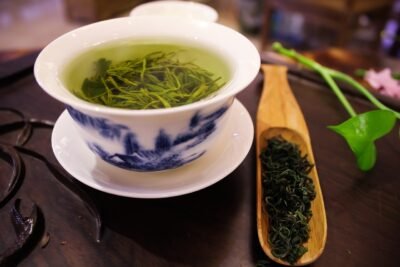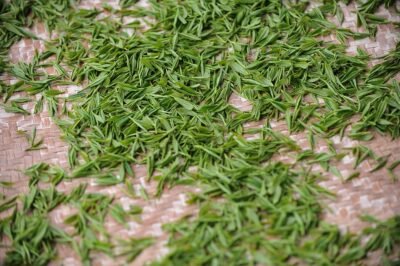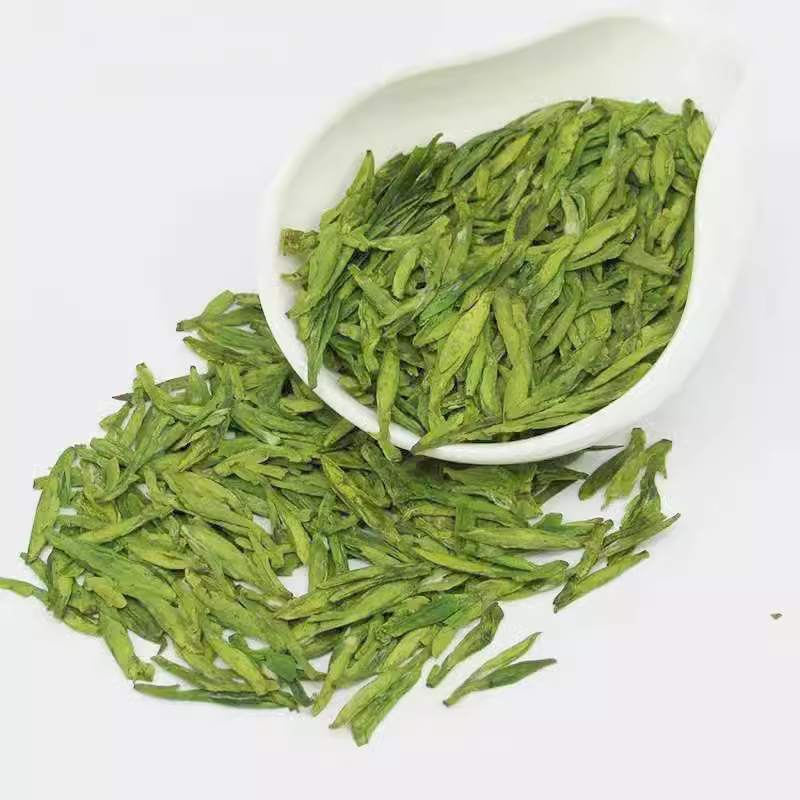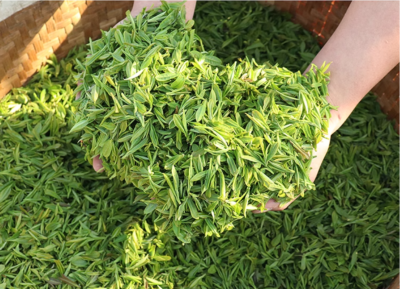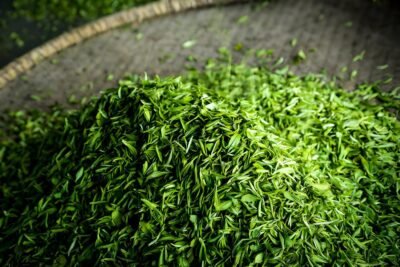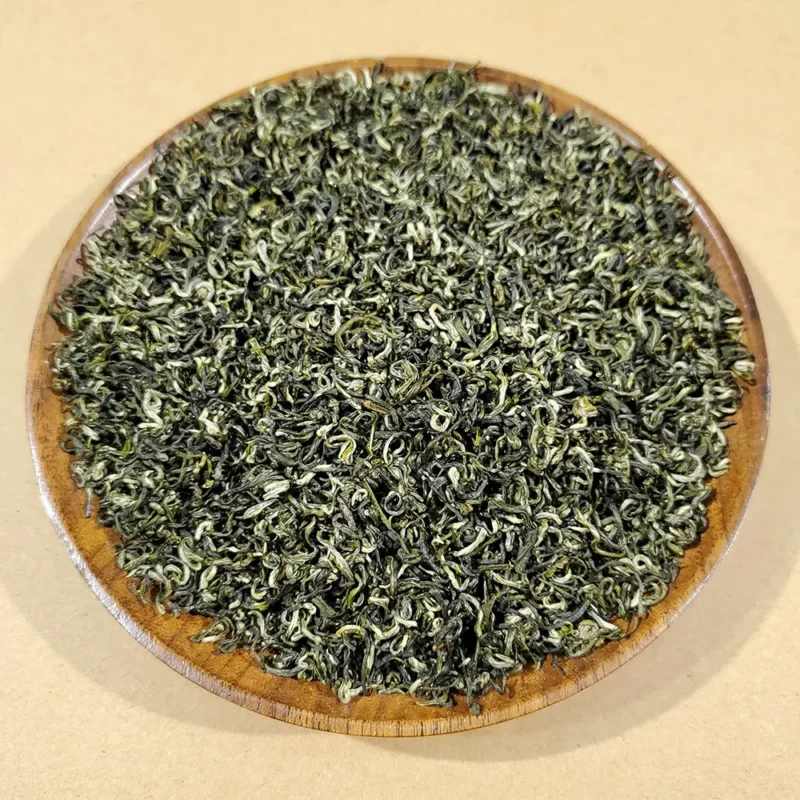Green tea is the largest category of raw leaf tea produced in China, also known as an unfermented tea because it is not processed through the fermentation process. Fresh tea leaves are picked and then laid out to dry before being put into a hot pan at temperatures of around 200-300°C to roast. The typical process of killing, twisting and drying the leaves is used to make green tea. Green tea is one of the tea varieties with a long history and many varieties. It is loved by tea lovers for its unique taste, fresh fragrance and rich nutritional value. This article will give you a detailed introduction to the classification of green tea and the characteristics of each variety, so you can easily choose your favorite green tea.
1.Classification of Green Tea
Green tea can be divided into six categories based on its production process and quality characteristics:
Pan-fired green tea: It is processed by pan-firing, characterized by its fresh and clear fragrance, fresh taste, and green and bright tea soup. Representative varieties include West Lake Longjing and Biluochun.
Roasted Green Tea: This type of tea is made by Baking method, resulting in a fuller and more distinct flavor. Popular varieties include large-leaf green tea and small-leaf green tea.
Sun-dried green tea: dried using sunlight, with a strong scent of sun-dried tea. Representative varieties include Liu’an Guapian and taiping houkui.
Steamed green tea: The tea leaves are dried using steam, resulting in a fresh and crisp taste, with a clear and bright tea soup. Representative varieties include Enshi YuLu and Maofeng.
Fermented green tea: fermented under specific conditions, it has a unique aroma and taste. Representative varieties include Xinyang Maojian and Liubao tea.
Blended green tea: a type of tea made by blending different varieties of green tea in a certain proportion, resulting in a rich and distinctive taste. Representative varieties include jasmine tea and maojian green tea.
2.How to Choose Green Tea
Appearance: Premium green tea has a neat appearance, with tightly rolled leaves and a bright green color. If the tea leaves are dull and broken, the quality is poor.
Aroma: The aroma of green tea is fresh and varies depending on the variety. When selecting green tea, you can smell the leaves to see if the aroma is strong and lasting, indicating a high-quality product.
Tea color: The color of green tea should be green, clear and bright. If the tea turns yellow or cloudy, it is not of good quality.
Taste: Green tea has a fresh and sweet taste with a lingering aftertaste. The taste varies slightly depending on the variety. Pay attention to the taste and aftertaste when tasting.
Tea leaves at the bottom of the brew: In green tea, the leaf bottom should be bright green and even after brewing. If the leaf bottom is dull and the leaves are broken, the quality is poor.
Which green tea is the better one?
1.West Lake Longjing Tea
Currently, the West Lake Longjing tea production area refers to a type of green tea produced in the West Lake scenic area, which can be divided into Grade 1 and Grade 2 production areas. The other production areas within Zhejiang Province that are not included in the West Lake scenic area are collectively referred to as Zhejiang Longjing or Longjing tea, of which there are two subtypes: Qiantang Longjing and Yuezhou Longjing. The superior West Lake Longjing has a slender, smooth, upright and pointed shape, is evenly arranged, clean and has a tender green color with a fixed light hue; it has a fresh and fragrant taste that lasts for a long time, a tender green and bright soup, a sweet and refreshing taste, and a young and tender bud with a complete shape.
2.Huangshan Maofeng Tea
Huangshan Maofeng is a type of green tea that is pan-fired, and it is renowned for its unique characteristics of “fragrant, rich flavor, clear soup, and lustrous color,” making it a fine tea. It is one of China’s ten most famous teas.
3.Xinyang Maojian
Xinyang Maojian is a type of green tea produced in Xinyang City, Henan Province, China. The buds of the tea are pointed, which is a characteristic of a good tea. Xinyang Maojian places great emphasis on picking the buds, and the proportion of buds is very high compared to the leaves. Although both have the word “mao” in their names, Maojian has more tea hairs on the dry tea leaves than Maofeng, and the tea soup after brewing will appear more turbid, not as clear as Maofeng, which is also a normal phenomenon. The superior Xinyang Maojian brewed has a good view after the tea leaves open, not messy, with abundant tea hairs, and a fragrance that gives a sense of a more elegant and tender aroma. The taste is fresh and refreshing, with a hint of sweetness, and has a lingering aftertaste.
4. Biluochun tea
Biluochun tea is one of China’s ten most famous teas, renowned for its four distinct characteristics: beautiful shape, vibrant color, strong fragrance, and rich taste. It is produced in the Longjing Village on the Dongting Mountain in Suzhou, Jiangsu Province.
Chinese people often say, “As long as there is a teapot, Chinese people will be happy wherever they go. Wherever there are Chinese people, there is tea. This shows that tea is an indispensable beverage in daily life for Chinese people. Therefore, choosing the right tea is also very important.”



